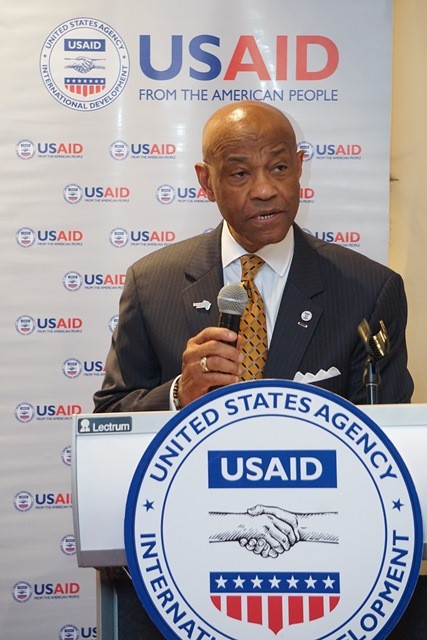
[As Prepared]
Thank you, Michael, for that kind introduction, and for the consistent leadership you have shown in shaping the post-2015 agenda.
I would also like to thank and acknowledge our many partners hosting this event.
This includes the governments of the United Kingdom, Sweden, Australia, and Canada, as well as the Rockefeller Foundation, the Gates Foundation, UNICEF, and the World Bank. All over the world, their efforts are saving lives, and we are grateful for their partnership.
The entire team at the U.S. Global Development Lab, headed by Ann Mei Chang, has done tremendous work organizing this event, with support and guidance from results for development.
Thank you for your great work, and for ensuring USAID is on the cutting edge of science, technology, innovation, and partnerships.
We are here at a pivotal moment in history. The world today faces increasingly complex challenges, from the worst refugee crisis since World War II to a changing climate.
These challenges span across borders, and impact all sectors…
They are too complex for traditional approaches…
They are too enormous for any single funding stream to address alone, especially given our limited resources...
And, the world’s population is projected to grow to 9 billion by 2050, putting an even greater strain on those resources.
So, as we begin down our path to meet the future sustainable development goals, we must seek solutions that help us catalyze further investment, and make the most out of every single resource available to us.
At USAID, we are doing this by supporting local solutions through partnerships and innovation.
By partnering across sectors, we can combine development assistance with private investment and country resources to maximize our collective investments.
And, by sparking innovation, we can identify the transformative solutions that optimize our impact.
To do this, we must not be afraid to fail. One of our goals at USAID—and I hope this is true for all of our partners—is to become a true learning organization.
We must learn from our successes, adjust our programs where needed, and be prepared to change course when something fails.
The work of our global development lab offers a great example of this.
Through its development innovation ventures program, we invest small amounts of resources in new ideas and unproven concepts.
This model allows us to learn quickly when ideas fail. And, when they succeed, we discover how to reach millions of people at a fraction of the usual cost.
For example, we are helping scale up a program called dispensers for safe water in East Africa, which has proved that easy-to-use chlorine dispensers placed at communal water sources can greatly improve water treatment in households.
This program will prevent 3.3 million cases of diarrhea and 3,200 child deaths – all at just two percent of the traditional cost.
Not only are innovations like these ensuring our investments go further, they are also accelerating our impact.
The outbreak of a deadly disease like Ebola emphasizes the great need for swift action and new ideas.
Through our grand challenges for development program, we provided 15 grants of up to a million dollars to rapidly develop and test new, innovative ideas.
These grants, and the new partnerships formed around them, will be critical to bringing some of the best ideas to the field in a matter of months.
That brings me back to an essential piece of the puzzle: partnerships.
As you all know well, innovation requires collaboration. To discover, fund, and scale transformative solutions, we need to work across sectors.
Governments, civil society, the private sector, academia, donors, and development institutions must all play a part.
Partnerships are at the core of how USAID does business. In fact, the first words of our mission statement are “we partner.”
That is why we are proud to be part of a new community of innovation labs, supported by our partners at the Rockefeller Foundation and results for development.
Today, with our partners in this community, we are laying out six core principles critical for supporting innovation in international development.
The panelists will delve into greater detail on what these principles look like in action, but I would like to share them with you now.
They are…
Number one. Invest in locally-driven solutions…
Two. Take intelligent risks…
Three. Use evidence to drive decision-making…
Four. Fail fast and iterate…
Five. Facilitate collaboration and co-creation across sectors…
And six. Identify scalable solutions.
By working together and following these principles, we can support the innovations that will put us on the path to meet our ambitious, next-generation goals.
Ultimately, that means saving lives and lifting millions out of extreme poverty.
Thank you for your kind attention, your partnership, and your unwavering commitment to finding innovative solutions for the world’s most difficult challenges.







Comment
Make a general inquiry or suggest an improvement.